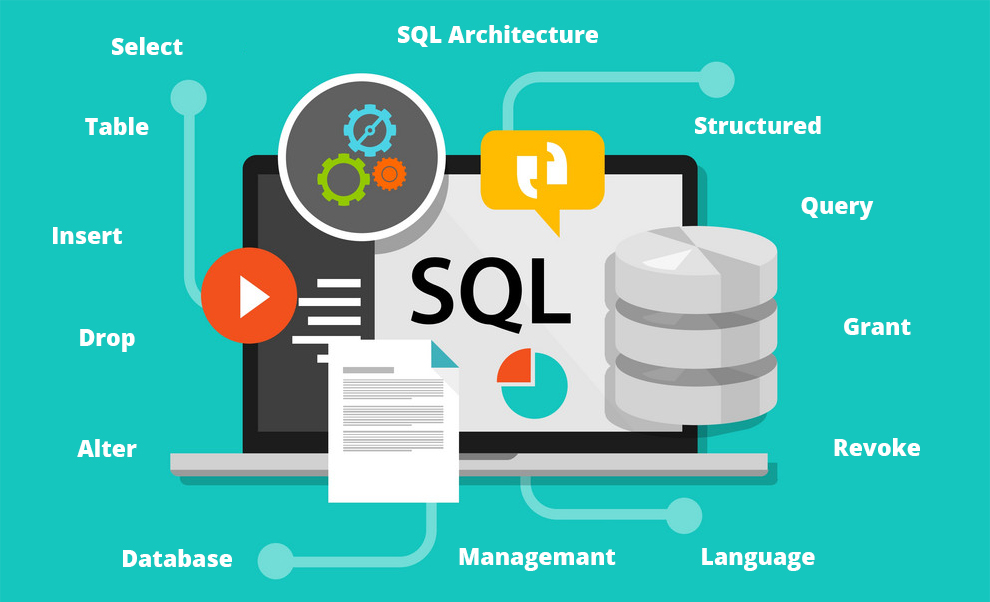If you want to know learn Elasticsearch but can’t figure out how to master it, then this article is for you. It will teach you the best way to learn Elasticsearch and step-by-step instructions to have a good grasp of the subject.
In addition to that, we will also provide you with a basic understanding of what Elasticsearch is.
Jump To
- What Is Elasticsearch?
- How Does It Work?
- Why Is Elasticsearch Used?
- How To Learn Elasticsearch Step By Step?
- Frequently Asked Questions
- EndNote
What Is Elasticsearch? Understanding Elasticsearch Basics
Let us first know a little bit regarding what Elasticsearch actually is?
First released in 2010 by N.V., Elasticsearch is an analytical search engine built on Apache Lucene and written in Java. It operates by creating JSON objects to store data instead of using documents.
In simple terms, it is a distributed and open-source engine that assists users in searching for any kind of data in text and number format. The data is not organized in rows or columns, and therefore it is similar to a No-SQL database.
Elasticsearch functions at high speed and has high scalability. It is well known for its restful APIs and distributed nature, and it also allows users to search and analyze their data in real-time. Elasticsearch is a part of the Elastic Stack, which comprises Logstash, Kibana and Beats.
The Architecture of Elasticsearch: How Does It Work?
The best way to learn Elasticsearch from the beginning is to know its architecture first.
In Elasticsearch, documents are stored as JSON objects, and Elasticsearch basically supports their retrieval. It also has provisions to support a nested structure, which means that you can make complex queries and store a vast amount of data in Elasticsearch.
Nodes and clusters form the foundation of the Elasticsearch architecture. Nodes are an instance of Elasticsearch that can either be virtual or physical in nature. Nodes contain data and deal with transport traffic as well as HTTP requests.
A group of nodes that are connected together is known as a cluster. Every data within Elasticsearch is stored in a particular index number; this is where nodes help by keeping track of the indices.
If you want to know how to learn Elasticsearch, you must possess an intricate knowledge of its structure, functions and applications in solving problems.
Why Is Elasticsearch Used?
Elasticsearch is used for several purposes. Some of them are:
- Developers use it as it considerably reduces the debugging time.
- It helps in creating a robust and powerful search experience for your website.
- Elasticsearch can notify the most used communication channel in case any malicious activity or malware is detected in the infrastructure.
- It is used in security, metrics and business analysis.
- Elasticsearch can be used for searching most of the popular sites.
Besides these functions, Elasticsearch is also used for several other processes and learning to use Elasticsearch can be highly beneficial for you as a developer or business owner.
How To Learn Elasticsearch Step By Step?
Step 1: Understanding its glossary
The first step you need to take in order to be able to properly learn Elasticsearch is to familiarize yourself with the terminology of the subject.
All of these terms are mentioned in the Elasticsearch glossary and every learner must go through them so that they can be well-versed with the Elasticsearch terminology.
It is extremely crucial to be accustomed to a few terms that are frequently used in Elasticsearch like:
- Action
- Administration control
- API key
- Alias
- Allocator
- APM agent
- APM server
- Auto-follow pattern,
- Availability zone
- Basemap
- beats runner
- buckets
- Canvas
- Cluster
- Codec plug-in,
- system index
- stack alerts
- tokenization
- time-series data
- Uptime
- Vega
- Warm Phase
- Web Map services
- WorkPad
- Zookeeper
- Painless Lab
- Primary Shard
- Proxy
- Kibana privileges
- Local cluster
- leader index
- master node
- Heat map
- hot phase
- hot thread
- Geo-JSON and much more.
Step 2: Learning about its documentation
In order to know how to learn Elasticsearch, you should know about its documentation processes. Elasticsearch is a document storage system that is distributed.
Elasticsearch holds sophisticated data structures that have been serialized as JSON documents rather than rows of columnar data.
When a cluster has many Elasticsearch nodes, saved documents are dispersed across the cluster and may be viewed instantly from any node.
When a document is saved, it is immediately indexed and completely searchable.
The index represents your documents in an organized way by sorting it. Elasticsearch makes use of an inverted index, which allows for extremely quick full-text searches. An inverted index lists using a specific term and enlists before you all the files with that specific word.
Each document is an amalgamation of fields. These fields are the most important component that make up your entire data.
Elasticsearch indexes all data in each field by default, and each indexed field has its own optimized data structure. For example, inverted indices are used to hold text fields, whereas BKD trees are used to store numeric and geodata.
Step 3: Elasticsearch books could be a savior
Have you wondered ‘how effective it may be to learn Elasticsearch from a book?’ or ‘How to learn Elasticsearch from a book?’
The answer is that it’s extremely effective to learn Elasticsearch from a textbook and as far as ‘how to learn’ is concerned, you must purchase a good book with spectacular reviews to learn the basics of Elasticsearch and the theory behind Elasticsearch so that you can build strong foundations of the subject.
There are several informative Elasticsearch textbooks available in the market and even online from where you can gather all the necessary information to learn Elasticsearch.
It is always advisable to invest in books because you can refer to them anytime, even in the future. Today, there are online e-books and PDFs available for free download, which can help you learn Elasticsearch step by step.
Step 4: Start small with online tutorials
Watching online tutorials is one of the best ways to learn Elasticsearch. You can hop onto any website that provides free mini-tutorials on Elasticsearch.
YouTube can also prove to be very useful in this aspect. Several professionals make educational videos on YouTube, and you can avail them absolutely free of cost.
These videos are not time-consuming and explain important terminologies in a very simple manner. Therefore, students can start to develop the primary knowledge of Elasticsearch through online tutorials.
Step 5: Learn from the official site
The official site of Elasticsearch has a webpage named ‘Elasticsearch resources‘, which provides you with materials and training that you would require to learn Elasticsearch.
It is one of the best places to start learning Elasticsearch and is one of the best answers to the question “how to learn Elasticsearch by oneself?” because the official website always has premium content and covers Elasticsearch in detail.
The web page offers training with certification and contains theoretical resources that you can read to form a basic concept of Elasticsearch documentation and then deploy it and work on it like a professional.
Learning from these resources will be useful for you as it will help you visualize, analyze and query the data stored in Elasticsearch.
Step 6: Getting certified through online courses
The next step in the process of learning Elasticsearch would be to take up an online course from platforms like Udacity, Udemy, Coursera, edX and alike to know about Elasticsearch in-depth and finally apply what you have learned so far in real life through tasks given in the courses.
These courses take time to complete, and they tend to test your knowledge along the way and also teach you how to learn Elasticsearch in detail.
The majority of these courses provide valuable certificates that boost your resume. You can opt for these courses and get certified in Elasticsearch to use it like a professional.
Step 7: Install, configure and run Elasticsearch to practice regularly
In order to be able to use Elasticsearch as a professional, one needs to practice regularly.
You can easily install Elasticsearch for your operating system through the official website of Elasticsearch.
A zipped file will be installed in your system. Unzip the file through any standard unzipping software and then use the knowledge you have gained through books, tutorials and online courses to practice querying data in Elasticsearch.
The best way to learn Elasticsearch when you are just starting off with it is by regularly practicing.
You will have to be thorough with several features and elements before you can master them. The only way to ensure that is to dedicate enough time to practicing Elasticsearch on your PC.
Step 8: Learn about indexing and creating shards more in-detail
Shards are examples of Lucene index. In simple terms, it can be visualized as a search engine that indexes and deals with complex queries of data subsets in an Elasticsearch cluster.
Each index is composed of one or multiple shards. It is important to learn to index and create shards as they are the two most important aspects of Elasticsearch.
Once you have complete knowledge of indexes and shards, the rest of Elasticsearch automatically becomes simplified.
Step 9: Learn to query your data properly
The final step you need to take to learn Elasticsearch step by step is to get accustomed to querying data present in Elasticsearch accurately. This requires practice and a little application of common logic.
Before moving on to complex queries, one must learn how to make simple queries to retrieve their data.
Elasticsearch uses Lucene’s query syntax. The Lucene version can be determined by querying the root of an Elasticsearch cluster. The Domain Specific Language (DSL) used for querying data in Elasticsearch is built on JSON.
There are several categories of querying that one must be familiar with, like Range queries, Regix queries, Fuzzy queries, Wildcard queries and a lot more.
Once you master querying in Elasticsearch, you will have learned almost everything there is to know about Elasticsearch. You will also be able to put it to professional use.
Frequently Asked Questions
Now that you have an idea on the best way to learn Elasticsearch step by step, let’s answer some commonly asked questions by learners on Elasticsearch.
Q. Is Elasticsearch easy to learn?
Ans: For people with very limited or no coding experience, learning Elasticsearch can be challenging. However, it is not that difficult with previous experience in database management and JavaScript.
Q. Is Elasticsearch a database?
Ans: Yes. Elasticsearch is a No-SQL document-oriented database. This implies that the data in Elasticsearch is stored in an unstructured format and makes use of documents instead of schema or tablets.
Q. How to learn Elasticsearch fast?
Ans: One cannot find a shortcut to learning new technologies and Elasticsearch is no exception. You need years of practice before you can master the query language and fully comprehend the intricacies of its structure.
Q. Is Elasticsearch free?
Ans: Yes, Elasticsearch is absolutely free and open-source. The free features of Elastic help a lot of users to get started and even build entire solutions without spending anything. Elastic also provides support and extra features to products if you pay for them. That is one of the ways how open source companies like Elastic make money.
Q. How do I download Elasticsearch?
Ans: Go to Elastic’s official website and select the operating system in which you want to install Elasticsearch. That will initiate the download and a zipped file will be loaded into your system.
Unzip the file using any standard unzipping software and then provide the necessary permissions to the software to start using it on your desktop.
Elasticsearch will be loaded in your Personal Computer, and you can start practicing on it instantly to enhance your skills.
Q. Why is Elasticsearch so fast?
Ans: Elasticsearch is super fast since it has been built on Lucene indices and excels in full-text search. It provides a near real-time search experience.
Q. What is the best way to learn Elasticsearch?
Ans: The finest way to learn and become an Elasticsearch professional has been discussed in this article. This step by step guide to learning Elasticsearch and mastering it has been created in consultation with experts.
EndNote
This article provides all the necessary information required by a newbie to learn Elasticsearch step by step. If you have had a similar question regarding ‘how to learn Elasticsearch?’, we sincerely hope that reading this article has aided you in answering that question.
Learning Elasticsearch is quite simple, and it is a technology that is extremely in-demand these days. Learning and knowing to operate it on a professional level will surely open new avenues for your future!




